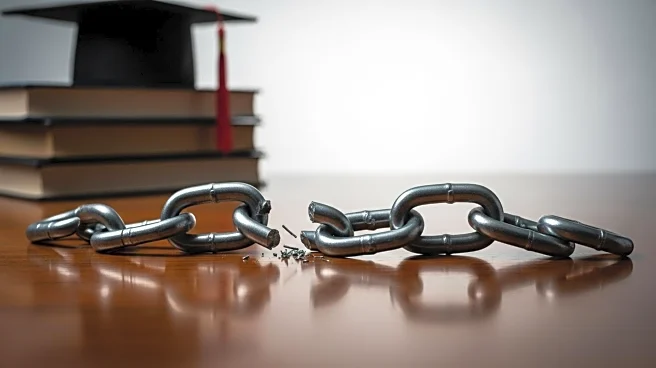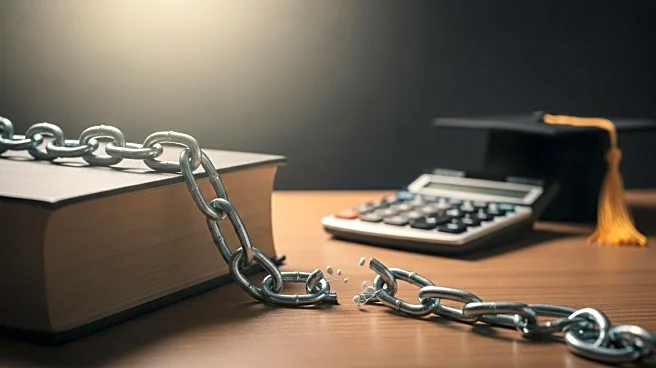What is the story about?
What's Happening?
Consumer Reports has released information on the increasing challenges faced by borrowers in managing student loan payments. According to the report, nearly 6 million Americans are at least three months behind on their federal student loan payments, with many at risk of defaulting. The Department of Education offers two main solutions for those in default: loan rehabilitation and loan consolidation. Loan rehabilitation involves making affordable monthly payments for ten months, while loan consolidation allows borrowers to combine defaulted loans into a single new loan. However, consolidation may result in higher interest payments over time. The report emphasizes the importance of addressing loan issues promptly to avoid severe consequences such as wage garnishment and tax refund seizures.
Why It's Important?
The rising number of student loan defaults poses significant financial risks for borrowers and could have broader economic implications. Defaults can damage credit scores, limiting access to future credit and affecting long-term financial stability. The situation also highlights the need for effective financial education and support systems to help borrowers manage their debts. Additionally, the potential increase in defaults could impact government resources and the overall economy, as more individuals struggle to meet their financial obligations.
What's Next?
Borrowers are encouraged to contact their loan servicers to explore repayment options that align with their financial situations. The Department of Education's solutions, such as loan rehabilitation and consolidation, offer pathways to regain control over loan payments. However, borrowers must remain vigilant against scams promising quick debt relief, which may result in financial loss or identity theft. Continued monitoring of default rates and borrower support initiatives will be crucial in addressing this growing issue.
AI Generated Content
Do you find this article useful?













